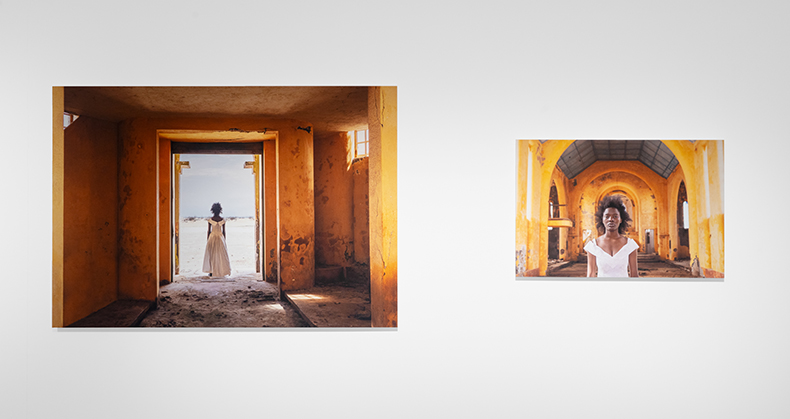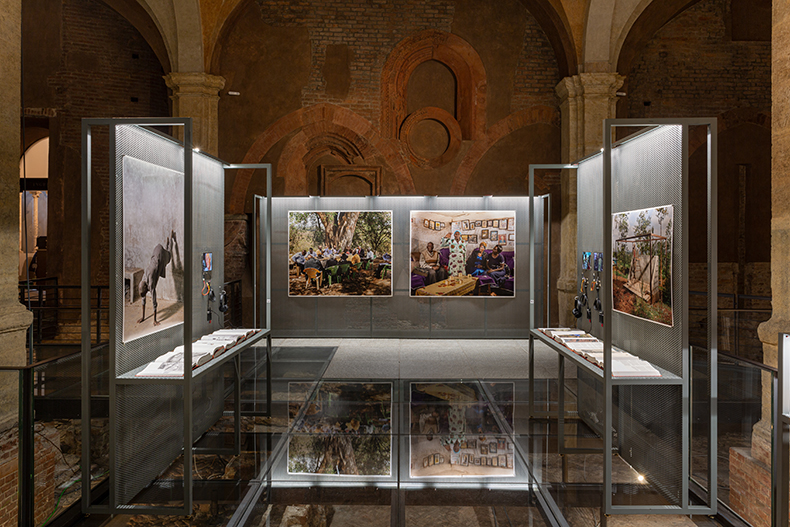Turin has much to offer in the way of contemporary art and photography. This cultural seam has been further enriched by Exposed, a new international festival of photography that opened on 2 May and runs until 2 June. With ‘New Landscapes’ as its inaugural theme, Exposed takes in the landscape of Turin itself, making use of both well-established and lesser-known venues to host some 20 solo and group exhibitions. An ‘Extended’ programme for the month-long festival takes in numerous other museums, commercial galleries and exhibition spaces, as well as artist talks and film screenings.
At the Castello di Rivoli Museum of Contemporary Art, an exhibition of work by the late Paolo Pellion di Persano, drawing on his recently donated archive, presents the Turin photographer’s snapshots in the context of the Arte Povera movement of the late 1960s and ’70s. Pellion di Persano documented the Castello’s own transformation into a museum, designed by architect Andrea Bruno, in the 1980s. Photographic engagements with the landscape, especially as part of the Land Art movement, are also on display at the Castello as part of a three-sited group show called ‘Expanded’. The show continues at the Gallery of Modern Art (GAM) with an overview of landscape-themed photography from 1839 to the present day, chiefly Italian and drawn from the gallery’s archives and collections. The third (and least convincing) part of ‘Expanded’ is in the OGR, a former railway repair workshop, where ‘photographic’ works – inspired by photography but created without a camera – glow under the atmospheric brick vaults.

Installation view of photographs from the project As if the World Had No West (2024) by Mónica de Miranda. Courtesy EXPOSED Torino Foto Festival; © the artist
Festivalgoers who venture to some of the smaller venues of Exposed will be rewarded with glimpses of a Turin that is off the tourist track, and with some of the most compelling work of the festival. The inaugural Exposed commission, a competitive grant won by Portuguese artist Mónica de Miranda, is free to view at the Polo del ’900, a former military barracks designed by court architect Filippo Juvarra in the early 18th century and located at the edge of the ungentrified Valdocco quarter. Her video and still photography installation As if the World Had No West (2024) takes the work of Angolan anthropologist Augusto Zita N’Gonguenho as its inspiration. Zita, who died in suspicious circumstances in 1987, asked what Thomas More’s Utopia would look like if viewed through Angolan traditional knowledge systems and in the context of the country’s colonial history. De Miranda, who is of Angolan descent, takes up this challenge through an ecofeminist lens, filming in the Namib desert, the verdant interior and ruined colonial settlements along the coast. Her female protagonist is an explorer looking not for conquest but for understanding, which she finds in older male and female interlocutors and in the desert plants unfolding new life from their withered leaves.
De Miranda’s work resonates with another film in the festival, by South African artist Lebohang Kganye. To view A Burden Consumed in Sips (2023), visitors descend to the former basement kitchens of the Palazzo Carignano, better known as the birthplace of Italy’s first king, Victor Emmanuel II, and the seat of the country’s first parliament. (Fittingly, it is also home to the National Museum of the Italian Risorgimento.) Across a gentle curve of 22 panels, the film opens with a series of sketches by Marie Pauline Thorbecke, who accompanied her ethnographer husband Franz Thorbecke to German-occupied Cameroon between 1911 and 1913. Kganye’s own filmic journey through the country’s contemporary scenery gradually and seamlessly overlays the Thorbecke drawings. The artist distributes objects from a sack she carries on her back, literally laying down a burden as she moves through the space, a solitary Black female figure attempting to reclaim a colonised landscape from white European sight.

Installation view of A Burden Consumed in Sips (2023) by Lebohang Kganye at the Palazzo Carignano, Turin. Courtesy EXPOSED Torino Foto Festival; © the artist
Nearby, Palazzo Madama provides a dramatic setting for another meditation on European colonialism: Belgian photographer Max Pinckers’s State of Emergency. A long-running collaboration with veterans of the Mau Mau uprising against the British Empire, this project revisits and revisualises places, episodes and experiences from the perspective of Kenyan soldiers and activists, now in their eighties and nineties. Pinckers’s large-format photographs are juxtaposed with documents from the UK National Archives (including the ‘migrated archives’ secretly removed from Kenya before it gained independence in 1963) and video footage, such as the chilling use of imprisoned Kenyan rebels in the film Simba (1955). Through the glass floor of the gallery, visitors can see the medieval foundations of the palace, in what may be an unintended visual metaphor for the layers of history the exhibition explores. Perhaps these three exhibitions – de Miranda, Kganye, Pinckers – open the way for a future edition of Exposed to address the layers of Italy’s own colonial past.

Installation view of State of Emergency (2014–24) by Max Pinckers at Salvatore Vitale, Turin. Courtesy EXPOSED Torino Foto Festival; photographs © the artist
With such a mix of locations, opening times and exhibition durations (some just last a month, others are on for much longer), this first edition of Exposed feels admirably ambitious but at times difficult to navigate. The new festival will also need to differentiate itself from the annual Fotografia Europea festival in Reggio Emilia, which is running at the same time this year. One risk of using multiple venues, sometimes in out-of-the-way areas, is that important work may be overlooked. It doesn’t help that de Miranda’s prize-winning commission is not flagged as such in the festival brochure.
Nonetheless, Exposed is a welcome addition to the photography festival calendar, shining a light on photographic collections, artistic initiatives and a host of museums and galleries in Turin. On the opening weekend, the yolk-yellow festival signposts outside each venue added colour to a city already festooned with pink for the first stage of the Giro d’Italia. Whichever event drew visitors to this regional capital, they won’t have been disappointed by its beauty or its history.
The first edition of EXPOSED Torino Foto Festival takes place across Turin until 2 June 2024.














![Masterpiece [Re]discovery 2022. Photo: Ben Fisher Photography, courtesy of Masterpiece London](http://zephr.apollo-magazine.com/wp-content/uploads/2022/07/MPL2022_4263.jpg)
‘Like landscape, his objects seem to breathe’: Gordon Baldwin (1932–2025)